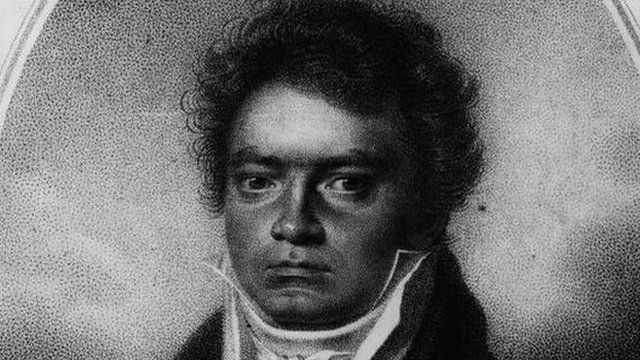
In the 15th and 16th century history underwent a huge campaign of misinformation and deception. Caught up in the wave of the history books being re-written was the true identity of Ludwig van Beethoven.
One of Europe’s greatest classical music composers was, in fact, of African decent. Beethoven was a black man. His mother was a Moor, a group of Muslim Africans who conquered parts of Europe -making Spain their capital for 800 years.
Stewartsynopsis.com reports:

BYPASS THE CENSORS
Sign up to get unfiltered news delivered straight to your inbox.
You can unsubscribe any time. By subscribing you agree to our Terms of Use
In order to make such a substantial statement, presentation of verifiable evidence is compulsory. Let’s start with what some of Beethoven’s contemporaries and biographers say about his appearance. Frau Fisher, a close friend of Beethoven, described him with “blackish-brown complexion.” Frederick Hertz, German anthropologist, used these terms to describe him: “Negroid traits, dark skin, flat, thick nose.”
Emil Ludwig, in his book “Beethoven,” says: “His face reveals no trace of the German. He was so dark that people dubbed him Spagnol [dark-skinned].” Fanny Giannatasio del Rio, in her book “An Unrequited Love: An Episode in the Life of Beethoven,” wrote “His somewhat flat broad nose and rather wide mouth, his small piercing eyes and swarthy [dark] complexion, pockmarked into the bargain, gave him a strong resemblance to a mulatto.” C. Czerny stated, “His beard–he had not shaved for several days–made the lower part of his already brown face still darker.”
Following are one word descriptions of Beethoven from various writers: Grillparzer, “dark”; Bettina von Armin, “brown”; Schindler, “red and brown”; Rellstab, “brownish”; Gelinek, “short, dark.”
Newsweek, in its Sept. 23, 1991 issue stated, “Afrocentrism ranges over the whole panorama of human history, coloring in the faces: from Australopithecus to the inventors of mathematics to the great Negro composer Beethoven.
Of course, in the world of scholarship there are those who take an opposite view. In the book The Changing Image of Beethoven by Alessandra Comini, an array of arguments are presented. Donald W. MacArdle, in a 1949 Musical Quarterly article came to the conclusion that there was “no Spanish, no Belgian, no Dutch, no African” in Beethoven’s genealogy. Dominque-Rene de Lerma, the great musical bibliologist, came to the same conclusion.
Included in this amazing discussion is a reference made of Beethoven’s teacher, Andre de Hevesy, in his book,Beethoven The Man. “Everyone knows the incident at Kismarton, or Eisenstadt, the residence of Prince Esterhazy, on his birthday. In the middle of the first allegro of Haydn’s symphony, His Highness asked the name of the author. He was brought forward.
“‘What!’ exclaimed the Prince, ‘the music is by the blackamoor (a black Moor). Well, my fine blackamoor, henceforth thou art in my service.’
“‘What is thy name?’
“‘Joseph Haydn.’”
We have all been fed false information for reasons previously mentioned. It is no secret that scholars, writers, critics, advertisers and Hollywood have changed history for their own specific reasons. What is uniquely different in the intellectual landscape, people of color now have an army of sophisticated scholars to combat the continuation and dissemination of false information that has been accepted as standard, as well as the canon in academia.
It is hoped that the revealing of this information will motivate others to critically look at all data flowing in their brains for authenticity. Hollywood is notorious for changing facts. I am not saying to hate Hollywood, but we do have to hold it accountable for disseminating inaccurate depictions, especially when it changes the course of history, by which our children are influenced.


These sources are not to legit looking.
These sources are not to legit looking.
A bigger load of rubbish I have never read. They are the manipulators.
A bigger load of rubbish I have never read. They are the manipulators.
LOL
A Liberal Afropassionata decomposition.